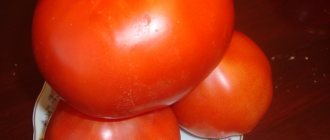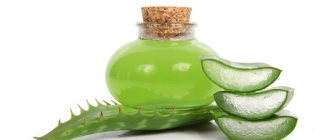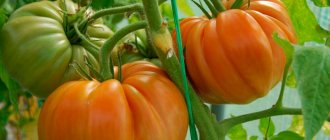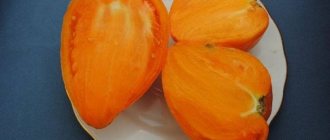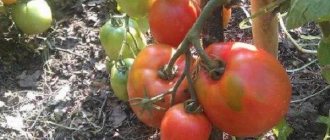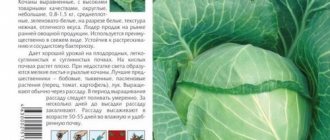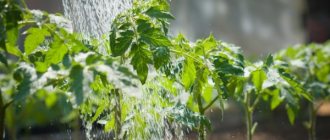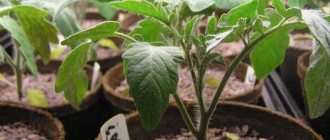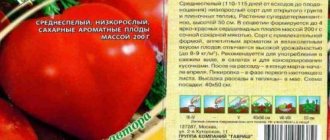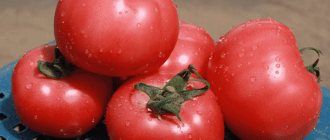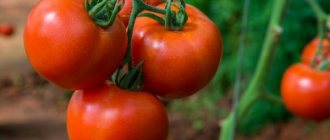Fresh tomato salads all season long or aromatic juices and ketchups in winter - what could be more desirable for farmers? With the Noble Fat Man F1 tomato, both are possible. The hybrid is very popular among gardeners.
| Height | Landing location | Ripening time | Fruit color | Fruit size | Origin | Fruit shape |
| Medium height | Greenhouse, Open ground | Early ripening | Pink | Large | Hybrid | Flat-round |
Description and characteristics of the variety
The noble fatty is part of the group of determinate hybrids. It is distinguished by its special endurance and durability. It can bear fruit in several rotations and produce harvests up to 2-3 times a year.
Features of the bushes:
- medium-sized, moderately branched;
- height 1-1.2 m;
- 4-5 tomatoes are tied on fruitful clusters;
- There are 7-9 brushes in total on each plant.
The Noble Fat Man tomato from “Ural Summer Resident” yields its harvest early – after 89-97 days from germination.
Tomato Description:
- average weight within 300 g;
- large fruits weigh up to 500 g;
- juicy, moderately dense pulp;
- crimson coloring;
- the skin is strong and tough.
The taste is classic, pleasant, without sourness.
Productivity
The Lev Tolstoy tomato has a sufficient advantage over other tomato varieties.
It is resistant to many serious diseases:
- Apical rot;
- Fusarium;
- Tobacco mosaic virus;
- Cladosporiosis.
You can find information on how to properly plant F1 Lev Tolstoy tomatoes on the back of the seed package
This advantage allows you to grow an excellent harvest and preserve the fruits until sale, bringing sufficient profit to the owner.
If the seeds are not treated, they should be placed in a weak solution of potassium permanganate, left for a few minutes and dried well on newspaper. To obtain a good and tasty harvest, experts recommend purchasing seeds with a shelf life of no more than one year.
Additional treatment with drugs such as Epin and Immunocytophyte is also necessary, which gives better germination for tomatoes and additionally protects them from a large number of different diseases. If there is no greenhouse, then ordinary gardeners are advised to prepare either cardboard or plastic containers in which the seeds are planted while waiting for the seedlings to be received. Then, after a certain period of time and reaching a temperature of at least 15 ᵒC, they are planted in open ground.
It is necessary to add a variety of mineral fertilizers to the soil; this allows young plants to receive all the necessary substances and grow quickly, giving a good harvest. When the seeds have sprouted, you need to take young seedlings and plant them in prepared soil. As a mandatory maintenance, you will need to weed out areas of weeds, loosen the soil at certain intervals and, as necessary, water the plants.
In addition to high yield, the Tolstoy tomato has a number of additional characteristics.
Tolstoy tomatoes can be grown both for sale and for personal consumption.
What shows the value of a tomato:
- It has excellent transportable qualities, allowing it to be transported over long distances without loss of product quality;
- If the fruits are overripe, they do not crack, maintaining a fresh and attractive appearance for a long time;
- It is best to make a variety of sauces from such fruits; you can make paste and tomato juice; they also lend themselves well to canning without losing their taste during heat treatment.
It is necessary to store in cool rooms, picking slightly unripe fruits; they will be elastic for a long time, spreading a pleasant and fresh aroma.
From 1 m2 they collect 8-10 kg.
Features of cultivation and storage
4-5 plants are planted per 1 m2. The depth of the holes is 30 cm.
It is considered optimal if the following crops grew in the beds before:
- greenery,
- salads,
- carrot,
- Buryak
The bushes lead into 2-3 trunks.
Nuances to be observed:
- Stepping 1 time every 10-12 days.
- Feed once every 2 weeks.
- Moderate watering no more than 3 times a week.
Tomato Fat Man
Description and characteristics of the Tolstoy F1 tomato, reviews, photos
Mid-season (110-115 days period from germination to the beginning of ripening), indeterminate tomato hybrid for open ground and greenhouses.
The bush is weakly leafy and requires tying to a support and pinching. The manufacturer recommends forming the plant into 1 or 2 stems.
Basic qualities of fruits
The fruits are round-cuboidal, slightly ribbed at the stalk, red in color at maturity, weighing 200-250 grams, fleshy, juicy and quite tasty (for a hybrid). These tomatoes are good for fresh consumption, home cooking and processing into tomato products.
Advantages of the hybrid : resistance to tobacco mosaic virus, cladosporiosis, excellent taste of the fruit.
Features of cultivation, planting and care
Sowing seeds for seedlings is carried out 60-65 days before the intended planting in the ground. Seedlings dive at the stage of two true leaves. When planting seedlings in a permanent place per 1 sq. m area it is recommended to place up to 3 plants, when forming into 1 stem - up to 4.
Further care for tomatoes consists of timely watering, fertilizing with complex mineral fertilizer, pinching, weed removal and preventive measures to protect the crop from diseases and pests.
It is not recommended to take seeds from this tomato for planting, since it is a hybrid, not a variety.
Seed producer : Sedek agricultural company.
If you grew Tolstoy tomatoes, please write whether you liked them or not. What was the yield and taste of the fruits like under your climatic conditions? How do you assess the disease resistance of this hybrid? If possible, attach to the comment a photo of the entire bush as a whole or individual ripe fruits that you grew. Thank you!
Your reviews of the Fat Man tomato, as well as additions to the description, will help many gardeners evaluate this hybrid objectively and decide whether it is worth planting or not.
Advantages and disadvantages
Advantages of the variety:
- large fruit;
- disease resistance;
- endurance to negative weather changes.
Of the minuses:
The advantages of the Tolstoy tomato include:
- High yield and the ability to plant in any soil;
- Resistance to major garden diseases;
- Excellent taste of fruits and ease of care for growing bushes;
- The versatility of the use of plant fruits.
- The tomato develops very poorly on soils with a deficiency of nutrients;
- At the same time, the number of brushes on the bushes and the total weight of tomatoes are noticeably reduced;
- The variety is not sufficiently resistant to late blight (this deficiency is most pronounced during the rainy season).
In conclusion, we note that in all other respects, Tolstoy tomatoes correspond to their name and provide gardeners with a rich harvest every season.
Best reviews from our readers
- Svetlana
planted seedlings in April. A child was born in May; the tomatoes received no care other than watering. Powerful bushes grew, albeit low, with several stems, with a large number of tomatoes, about 100 grams. We've been eating tomatoes for a month and a half now. It only suffers from the sun.
Sowing seeds
The Tolstoy tomato, as a tomato variety, is propagated by seeds, which are sown as seedlings at the very end of March. The order of operations performed in this case is given below:
- First, light soil, which is a mixture of humus and garden soil, is loaded into a planting container of the appropriate size;
Important! It is not recommended to use highly acidic soil for the Tolstoy variety.
- The resulting earthen composition is then fed with a small amount of wood ash, and then poured with boiling water with potassium permanganate dissolved in it;
- Immediately before planting, the seeds are disinfected with hydrogen peroxide, or they are kept for some time in a weak solution of potassium permanganate;
- Sometimes, to speed up germination, they are soaked in biostimulants for approximately 12 hours.
Sowing tomato seeds
During the sowing process, the seeds are buried approximately 1.5 cm into the prepared soil and covered with the same soil. After this, they are carefully watered from a watering can with a divider, and then covered with a transparent film and placed in a warm place.
The first shoots usually appear on the 4-5th day, after which the containers are placed on a well-lit windowsill and watered as needed (the soil should not dry out).
As soon as the first three leaves appear on the seedlings on the windowsill, they must be immediately transplanted into separate containers with nutrient soil. At the same time, it is recommended to feed the transplanted sprouts with complex mineral fertilizers.
Over the next few days, the seedlings are kept in a shaded place, after which they are placed on a windowsill well illuminated by sunlight. If there is a lack of light, additional radiation is provided above it (in the form of fluorescent or conventional lamps).
To water young shoots, small volumes of water are used to prevent stagnation. After moistening the soil, its top layer must be loosened (deep loosening is undesirable, since this can damage the roots that have not yet become strong).
Tomatoes should be planted in a garden bed or greenhouse when consistently warm weather arrives, eliminating the possibility of morning frosts. It can only be transferred to unprotected soil in a garden bed when the temperature reaches 15 degrees. Immediately before transferring, young seedlings must be hardened off by taking them outside for a while.
Picking tomatoes
The soil in the beds is thoroughly dug up right before planting, after which fertilizers are added to it and watered well.
Note! Wood ash and a full range of phosphorus-potassium mixtures are used as feed.
Holes for future bushes are made at a distance of about 40 cm from one another, and row spacing is arranged at a distance of about 60 cm. Seedlings planted in the soil should be thoroughly watered with water warmed in the sun (subsequent watering will be organized only after a week).
A little bit of history
The ancestor of the Fat Man tomato is considered to be the Dutch one, whose specialists, back in the last century, developed a tall variety intended specifically for unprotected soil. It was named in honor of the genius of Russian thought L.N. Tolstoy and fully met the expectations of the breeders.
Simultaneously with planting in open beds, it was allowed to be grown in greenhouses or under film, which fully corresponded to the stated ripening dates (initially it was positioned as mid-early).
According to reviews from amateur gardeners, the Tolstoy tomato can be classified as a crop that has not just high, but record yields. At the same time, the fruits of this plant have excellent taste, and the plant itself does not require special care during development.
